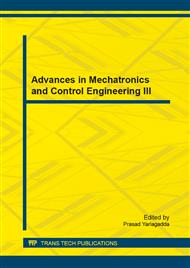p.252
p.260
p.264
p.268
p.274
p.281
p.285
p.290
p.295
Study of the Composite Oscillator of Particulate Monitoring Instrument Based on TEOM
Abstract:
The effects of atmospheric particulates were more prominent in recent years, so accurate monitoring of particulate matter was a problem needed to resolve. In the existing particulate monitoring instrument based on the principle of Tapered Element Oscillating Microbalance method (TEOM),the particle concentration detection system was tapered quartz tube simple harmonic oscillator. Due to the oscillator relying mainly on analog circuit closed-loop self-excitation oscillator to drive, loop resonance frequency, oscillation stability and Q value was greatly influenced by the oscillator physical characteristics and the interference of mechanical structure and circuit design parameters. And oscillation frequency must be read by the digital circuit frequency detection system, then figured out the corresponding quality. In this paper, we studied a kind of composite oscillator tube which can overcome the lack of stability in the existing technology and reduce the impact of coexistence at the same time of digital circuit and analog circuit. And oscillator frequency step precision raised almost an order of magnitude compared with the national standard detection accuracy of 10ug.
Info:
Periodical:
Pages:
274-280
Citation:
Online since:
October 2014
Authors:
Keywords:
Price:
Сopyright:
© 2014 Trans Tech Publications Ltd. All Rights Reserved
Share:
Citation:


